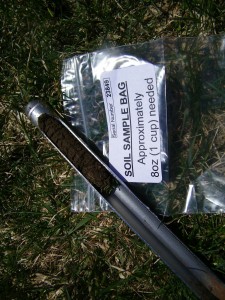There’s no doubt that fall has officially arrived.The remaining late season vegetables will be ready for harvest. Frost will occur this month, and many tasks can be accomplished in the garden for winter preparation.
Clean up
If you didn’t get around to cleaning up garden debris in September, October offers another chance. Compost healthy plants, but separately discard plants that have been affected by diseases and pests.
Related: November’s gardening to-do list
You can till healthy plant matter into your soil, too. Annual plants should be cut off at the soil’s surface, and perennials plants should be cut off above the crown, Ohio State University Extension recommends. The tops you cut off can be composted.
OSU Extension says to fertilize your lawn in late October, November or December because the grass has more root mass and a deeper root system, which creates a healthier plant. Also, disease and weed problems aren’t usually as bad, plus heat and drought tolerance is better than in the spring and summer.
Let leaves be

Leaves are a great addition to your compost pile. University of Illinois Extension warns about walnut leaves in the compost pile, though; they contain a growth inhibitor that affects some plants.
Test and amend your soil

You should test your garden’s soil every two or three years. The best time to test your soil is from September to December or from February to April, so if you want to test your soil this fall for next spring’s garden, you can do it this month.
Contact your local university extension office about obtaining a soil testing kit. Once you’ve collected the samples and mailed them to the lab, you should receive results in a couple of weeks.
Plant hardy bulbs and fruit
There’s still time to plant hardy bulbs this month. Farm and Dairy online columnist Ivory Harlow explains how to plant hardy bulbs like daffodils, tulips, crocuses, irises and peonies. These flowers will go dormant during the winter and will bloom in the spring.
Planting fruit trees, shrubs and brambles in fall gives plants time to establish strong roots, according to Ivory Harlow. This only applies if you live in hardiness zones 6-10, though, so be cautious with the varieties you choose to plant if you live in a colder climate.
If you have seed garlic at the ready, plant it this fall. Ivory Harlow offers instructions for fall garlic planting. Garlic will overwinter, then will be ready to harvest in mid- to late summer.
Care for plants during frost
The season’s first frost will likely occur soon for certain areas. Take care of your plants by covering them, watering or even bringing them inside if possible.
Farmers’ Almanac can give you an idea of when to expect the first frost date in your area.
Ripen tomatoes indoors
If frost hasn’t struck yet, your tomato plants may have some green fruit hanging on. Ivory Harlow recommends ripening these stubborn tomatoes indoors.
5 more posts about fall gardening:
- How to divide peonies
- Fall gardening guide
- How to clean up your garden for fall
- How to prepare your garden for fall frost and freeze
- Two superfoods to grow indoors during cool weather
Have any gardening questions or comments? Let us know in the comments below!











